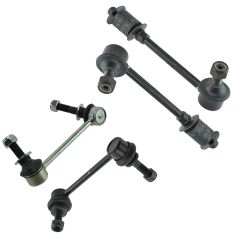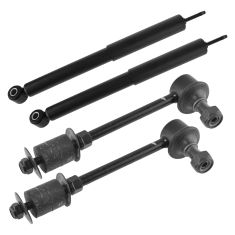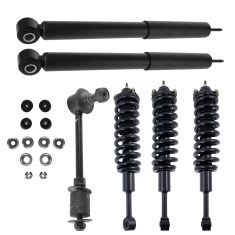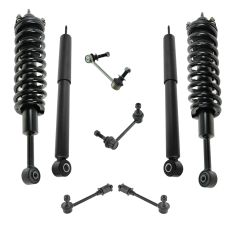1ASFK04392-Toyota Lexus Rear Driver & Passenger Side 2 Piece Sway Bar Link Set TRQ PSA55972
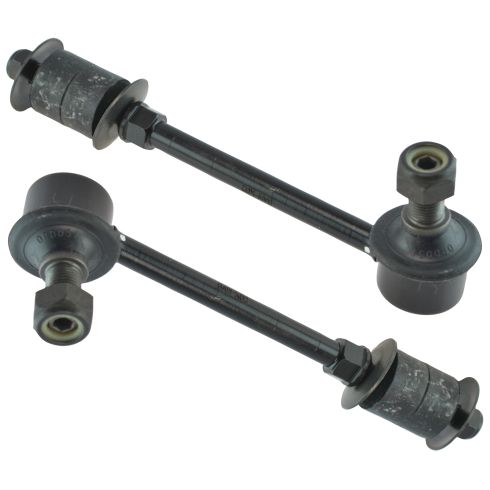
Replaces
2011 Toyota FJ Cruiser Rear Driver & Passenger Side 2 Piece Sway Bar Link Set TRQ PSA55972

Product Reviews
Loading reviews
3.67/ 5.0
3
3 reviews
More difficult to install than it should be
May 5, 2020
This part should be very easy to install, but there is a slight design flaw that makes it rather difficult. It looks to be two nuts that need to come off to remove and replace with the new part. The top portion with the two bushings comes off and goes on easily because it doesn't spin, but the bottom portion spins with removing and or installing the new nut. The problem is there is hardly anything to grip an hold the spinning portion in place while you're tightening the nut. First of all it is round an it is very narrow, and it is covered by a small portion of the rubber dust cover and round clip that holds the dust cover in place. So as you're trying to grip it with a pair of narrow vice grips, you're shooting for a very narrow piece of metal to grab onto, approximately the width of a quarter, then you have to deal with some of the rubber dust cover that overlaps it which definitely will not hold with vise grips as it is in between. I think if the rubber dust cover did not overlap on
Good OEM replacement
March 18, 2022
Had these installed on my 2006 Sport Edition. Mechanic had zero issue installing them.
A must-have upgrade for any driver.
February 2, 2024
I recently purchased the 1ASFK04392 Toyota Lexus Rear Driver & Passenger Side 2 Piece Sway Bar links, and I'm extremely satisfied with their performance. The build quality is impressive, providing enhanced stability and a noticeable improvement in handling. Installation was straightforward, making it a hassle-free upgrade. These sway bar links have significantly reduced body roll, contributing to a smoother and more controlled driving experience. Overall, a reliable and effective product that delivers on its promises. Highly recommended for those looking to enhance their vehicle's suspension performance.
Customer Q&A
Why does the new link come with a 18 millimeter nut.?Stock is 17 and most wrench sets go 15,17,19.
February 7, 2020
10
Thank you for the inquiry. This part comes as shown in the listing image and the lock nut should be the correct size for the vehicles listed in the fit chart. Please let us know if you have any other questions.
February 7, 2020
Christa R
Toyota is a registered trademark of Toyota Motor Corporation. 1A Auto is not affiliated with or sponsored by Toyota or Toyota Motor Corporation.
See all trademarks.






